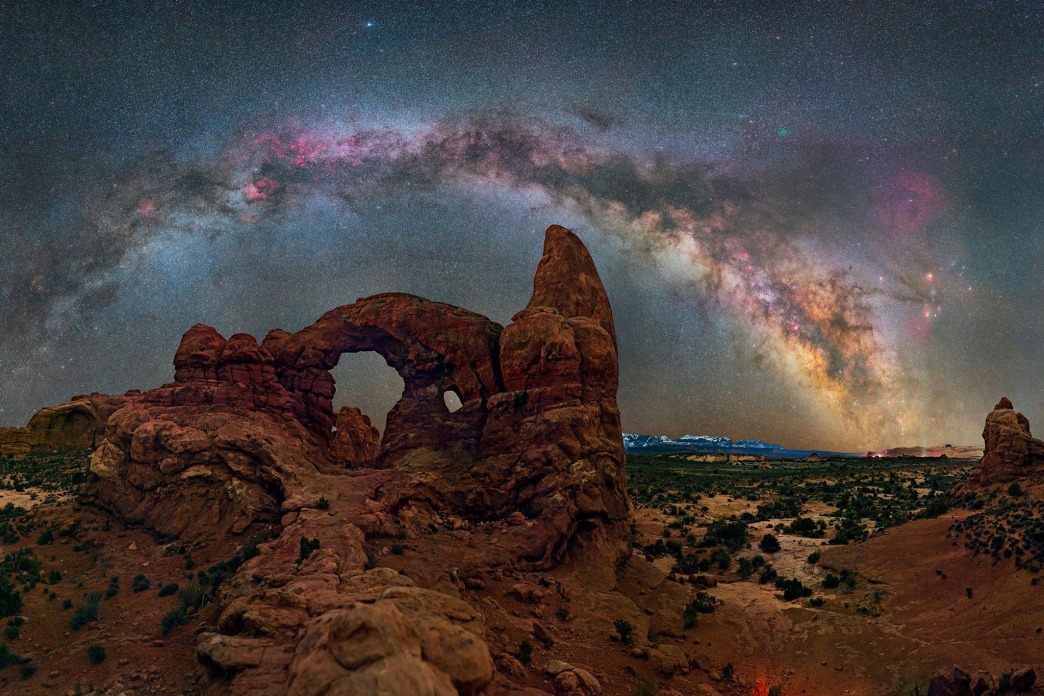Dave Lane has always been interested in space, but his love of astrophotography actually started in an unusual way—making marbles. “Years ago a friend did some glasswork and I started making marbles that looked like galaxies. I was looking for Hubble pictures online to confirm the colors, and I realized the images I found weren’t Hubble pictures, they were people’s pictures,” Lane said. “It was just a guy in his driveway with a telescope and a camera. I went on to realize you could do this on a somewhat reasonable budget.
I had to do this.”

Dave Lane Astrophotography
And so began Dave Lane’s journey towards becoming the accomplished astrophotographer that he is today. Though he had no previous photography experience, Lane set up convertible shingle roof in his home that he could split open and gaze at the night sky with his telescope. There was quite a bit of light pollution near his home, so he also set up a second telescope at his farm, south of Kansas City. Lane got some advice from friends who were already taking deep space photos, and started experimenting with that, as well as taking time lapse photos of barns and graveyards around Kansas. He eventually wandered up to Colorado, and then over to Utah, which is where some of his best photos have been taken.

Dave Lane Astrophotography
RootsRated talked to Dave Lane to find out a little bit more about his inspiration and what’s next for the self-proclaimed “astronut”.
RootsRated : Why do you focus on the Milky Way?
Dave Lane : Everyone thought deep space photos were cool, but you can’t really find them in the sky—they’re not relatable. People went crazy about the Milky Way pictures, and liked it better than the deep space stuff. I take what I’ve learned in deep space photography, which is taking tiny amounts of light, amplifying them, and making them pretty, and apply it to the Milky Way landscape. I call it “Milky Way fusion”—part astrophotography, part photography, part landscape astrophography.
RR : What inspires you?
DL : Finding something that’s going to make a great foreground.
RR : How do you pick the destinations?
DL : Astrophotography requires specific conditions—no to few clouds, an east to southeast facing vantage point, and no light pollution. I’m always looking around while I’m driving down a road, or using maps and weather predictions to find a good spot with clear skies.
RR : What’s your dream destination?
DL : Iceland for the Aurora Borealis, and anywhere in the Southern Hemisphere. The core of the Milky Way, which is to the right of our photos in the Northern Hemisphere, is actually in the Southern Hemisphere. It would be amazing to look dead into the core and get the whole thing in a picture.
RR : What advice would you give photographers who want to shoot the Milky Way?
DL : Make it interesting—finding an interesting foreground, interesting angle, object, colors. If you can’t answer ‘why did I just take that photo?’ you’re wasting your time. Go scouting without your camera, and know exactly what you’re shooting. Shots need to be purposeful, even in the digital age. I find for myself, that works well.
RR : Any plans for the upcoming Perseid meteor shower? (Author’s note: the Perseid meteor shower begins July 17 and continues until August 14, but the best nights to see it will be August 11-13. There is a full moon on August 18, so earlier in the month will be better.)
DL : When I go out to shoot, I take two cameras with me. For a meteor shower, I set up one in a time lapse with 30-second bursts, and then later stitch it all together.

Dave Lane Astrophotography
Currently, Dave Lane is working on a book with some of his best images, and a possible TED Talk about the effects of light pollution. He would love to do workshops, but the time on the road makes it difficult. “I go on 10-14 day road trips where six hours of sleep a night is pretty good,” Lane says. Not to mention how physically difficult the trips actually are—“it’s 2-3 hours across rough land and you are so tired, but then you have to set up and take the shots. It’s too late to drive out, so you camp until morning and then take the same rough ride back to the road, and then drive another 500+ miles.” Lane typically rests and recovers for about a week, and then it takes another week to process the photos (each photo takes 15-20 hours to process with 40+ images to edit and stitch together), and by then it’s time to go back out again.
But Dave Lane wouldn’t trade it for anything in the world. “I call it a full-time hobby. I’m retired. The last time someone else signed my check, Jimmy Carter was the president.”
Originally written by RootsRated.
Featured image provided by Dave Lane Astrophotography

 Turret Arch, Arches National Park, Utah. Technical Description: Canon 6D, 50mm at f/1.8, ISO 6400, 42 image panoramas in 2 parts, 30 sec exposures
Turret Arch, Arches National Park, Utah. Technical Description: Canon 6D, 50mm at f/1.8, ISO 6400, 42 image panoramas in 2 parts, 30 sec exposures